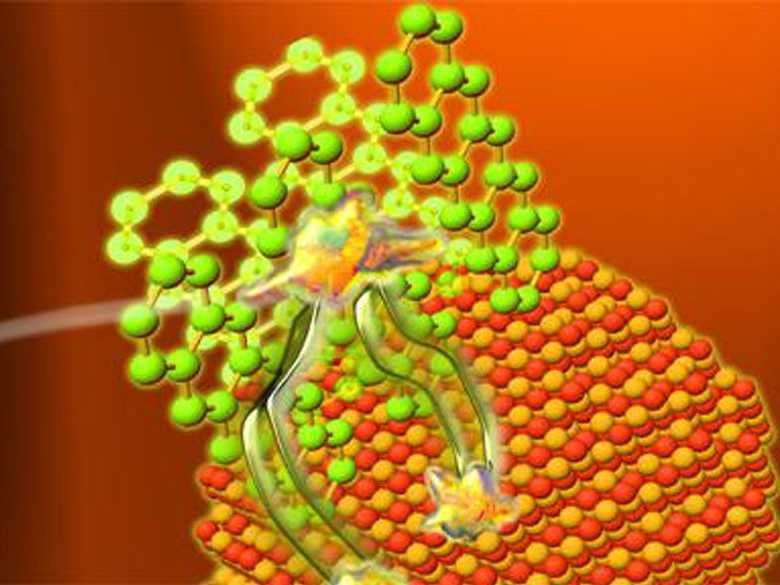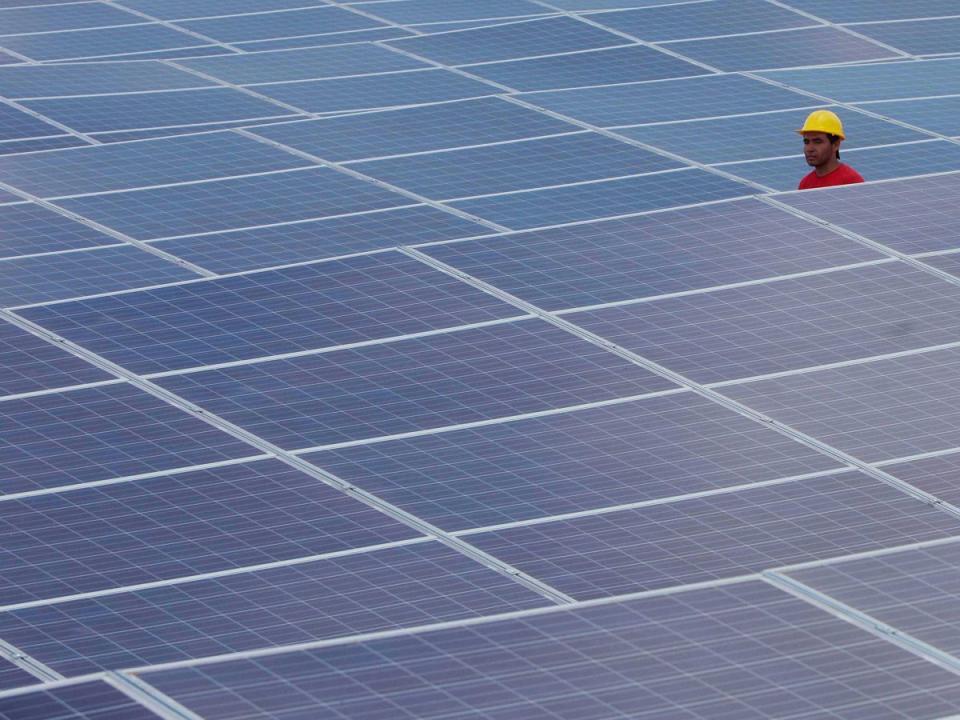A New Generation Of Solar Cells Could Smash Current Efficiency Limits

When light is absorbed in pentacene, the generated singlet excitons rapidly undergo fission into pairs of triplets that can be efficiently transferred onto inorganic nanocrystals.
A revolutionary technique developed by a team at the University of Cambridge could boost the efficiency of solar cells and accelerate the switch to renewable sources. The technique “could smash the solar efficiency ceiling,” according to a statement from the university.
The new method, published Thursday in the journal Nature Materials, lays the groundwork for building a new generation of solar cells made up of both organic and inorganic material. So far, most of solar cells are fully made of inorganic semiconductors, usually silicon, but these materials are not as energy efficient as organic semiconductors, like the pentacene used in the study.
In a solar cell, the light is used to excite the electrons in the atoms of the semiconductor: This excitement releases energy that can be used to produce electricity. In silicon solar cells, every single particle of light (photon) can excite one electron only, but in pentacene, a material naturally present in green leaves, the same quantity of light releases not one but two electrons, doubling the energy capacity of the semiconductor.
This improves the energy-efficiency ratio to up to 95%, a figure impossible to reach with conventional, inorganic semiconductors. The process “clears the way for hybrid solar cells which could far surpass current efficiency limits,” a media release said.

AP Photo/Juan Karita
Solar energy has so far faced strong competition from hydroelectric and wind powers, and only accounted for a small share of energy production. For example, in 2013 the UK produced just 3.8 of its electricity from solar. In the US, only 0.016% of total renewable energy production came from solar last year, mainly in California. Hydroelectric accounted for about 50% of the total renewable.
Nevertheless, much is hoped from solar power, potentially the most fruitful source of renewable energy. The International Energy Agency hopes to make it the largest source of electricity in the world by 2050.
CNBC reported that the whole solar production more than quadrupled in the US since 2010, while shares for SolarCity, Elon Musk’s own energy provider, have boomed during the summer.
Read more stories on Business Insider, Malaysian edition of the world’s fastest-growing business and technology news website.


